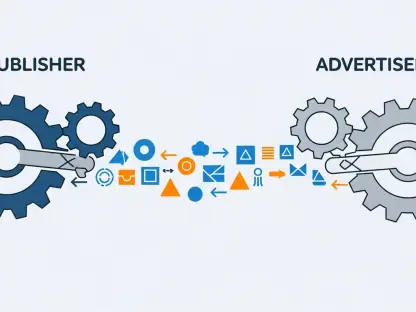As the Internet of Things (IoT) domain rapidly evolves, the integration of eSIM technology represents a revolutionary stride toward enhanced device connectivity and management. Recent progress in eSIM solutions is redefining how IoT devices are manufactured and deployed, offering innovations that streamline operations and address regulatory issues in the dynamic global market. New specifications like SGP.32 are poised to transform the industry, providing not just a technical upgrade, but a fundamental shift in how businesses perceive and manage connectivity.
Analyzing eSIM Technology Features and Performance
Core Innovations of eSIM
eSIM technology emerges as a pivotal advancement in device connectivity, with features enabling seamless integration and operation across diverse networks. Unlike traditional physical SIM cards, eSIMs are embedded directly into devices, enabling remote provisioning. This shift not only simplifies the physical design by reducing the need for additional slots but also enhances the security and management of the device over its lifecycle.
One of the standout features of eSIM technology is its ability to carry out remote provisioning and management. This feature allows network profiles to be managed across vast fleets of devices, significantly reducing logistical complexities and operational costs. Moreover, with the SGP.32 specification, devices can be activated at the factory level, ensuring they comply with regional data regulations seamlessly upon deployment.
Regulatory Compliance and Industry Shifts
SGP.32 also addresses complex regulatory requirements regarding data roaming and sovereignty. This has historically been a challenge for IoT deployments, where devices often need to operate internationally. By facilitating compliance from the ground up, eSIMs enhance global reach and operational flexibility. The industry is seeing a shift in dynamics, with Original Equipment Manufacturers (OEMs) and network operators recalibrating their strategies. Emphasizing long-term sustainability, MVNOs, in particular, are poised to assume leadership roles in managing connectivity infrastructures.
Recent Enhancements and Industrial Applications
Recent advancements have sparked significant changes in eSIM functionality, with developments such as in-factory profile provisioning (iFPP). Scheduled to become routine, iFPP simplifies manufacturing by allowing devices to be prepared for connectivity during production. Consequently, the post-deployment phase becomes less burdensome, reducing the total complexity and cost of device management.
The adoption landscape shows sectors like automotive and smart utilities leading the charge in embracing eSIM technology. Its application in these areas showcases potential reductions in operational fragmentation, enhancing overall system reliability.
The Potential of eSIM and Looking Ahead
As eSIM technology continues to develop, one can expect a broader implementation across various industries beyond those initially mentioned. The potential tipping point is projected to occur soon, when more than half of new IoT connections will depend on this innovative technology. The business value transcends immediate cost savings by prioritizing continuity and minimal disruption in long-term applications.
Looking forward, as service models evolve, the conversation must focus on overcoming existing challenges like the education gap among stakeholders, heightening awareness of the long-term advantages of eSIM adoption. The evolving industry structure signals a time of exciting transformation within the IoT sphere, suggesting collaborations will redefine traditional infrastructure management models.
Final Thoughts on eSIM Innovation
The review of eSIM technology within the IoT landscape highlighted a period of rapid advancement tangled with the promise of streamlined connectivity solutions. As the industry adjusted to the new SGP.32 specifications, enterprises gained novel opportunities to innovate and transform how they interact within a connected world. These developments prompted shifts in operational strategies and mindsets, opening a dialogue on future imperatives.
The transition offered by eSIM was not merely a technological upgrade but a strategic pivot to future-ready connectivity. It invited an intriguing intersection of regulatory adherence, industrial harmony, and technological evolution, reshaping the IoT narrative in unprecedented ways. Moving forward, the continued collaboration among stakeholders remains crucial to leveraging the full potential of eSIM innovations, further reshaping the technology landscape in coming years.









